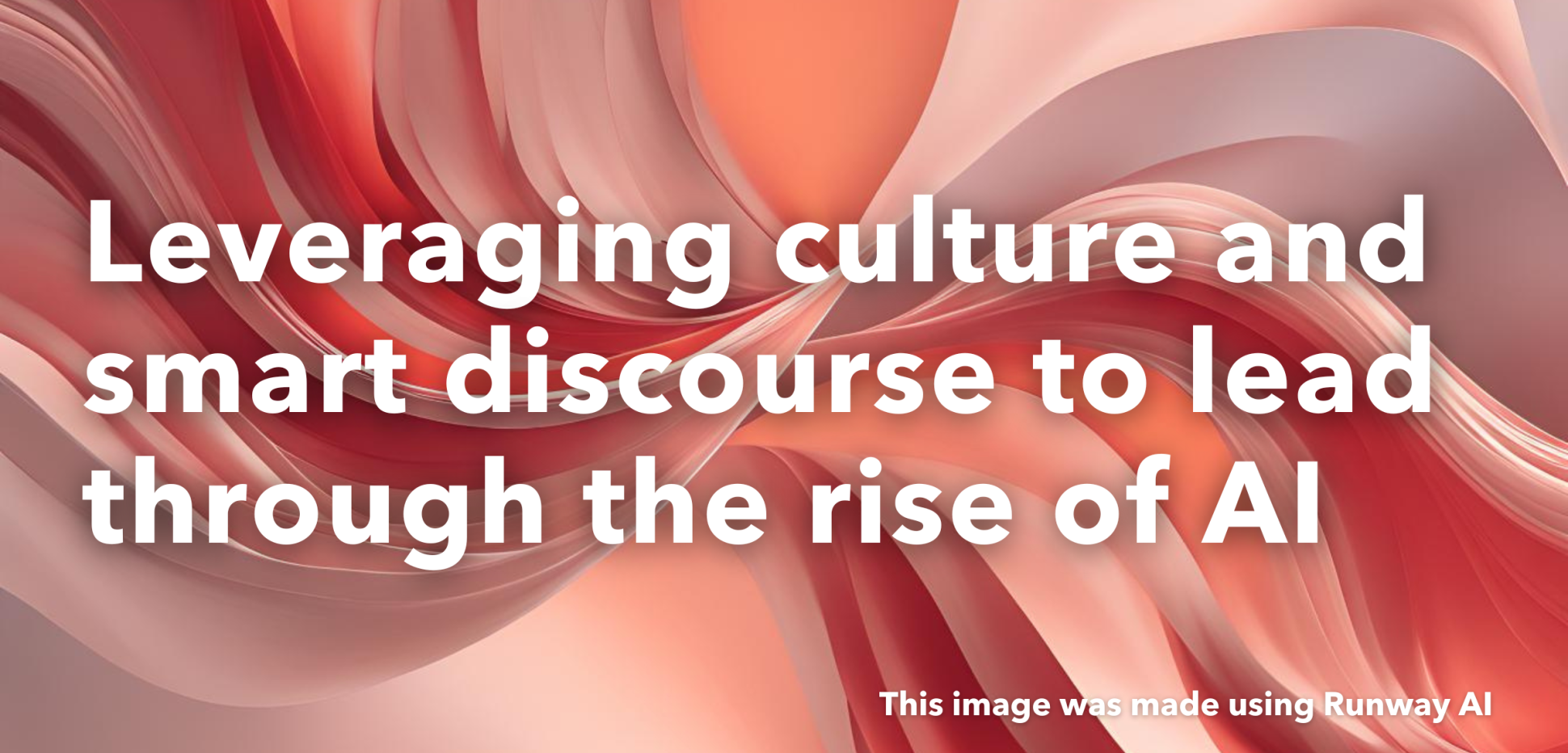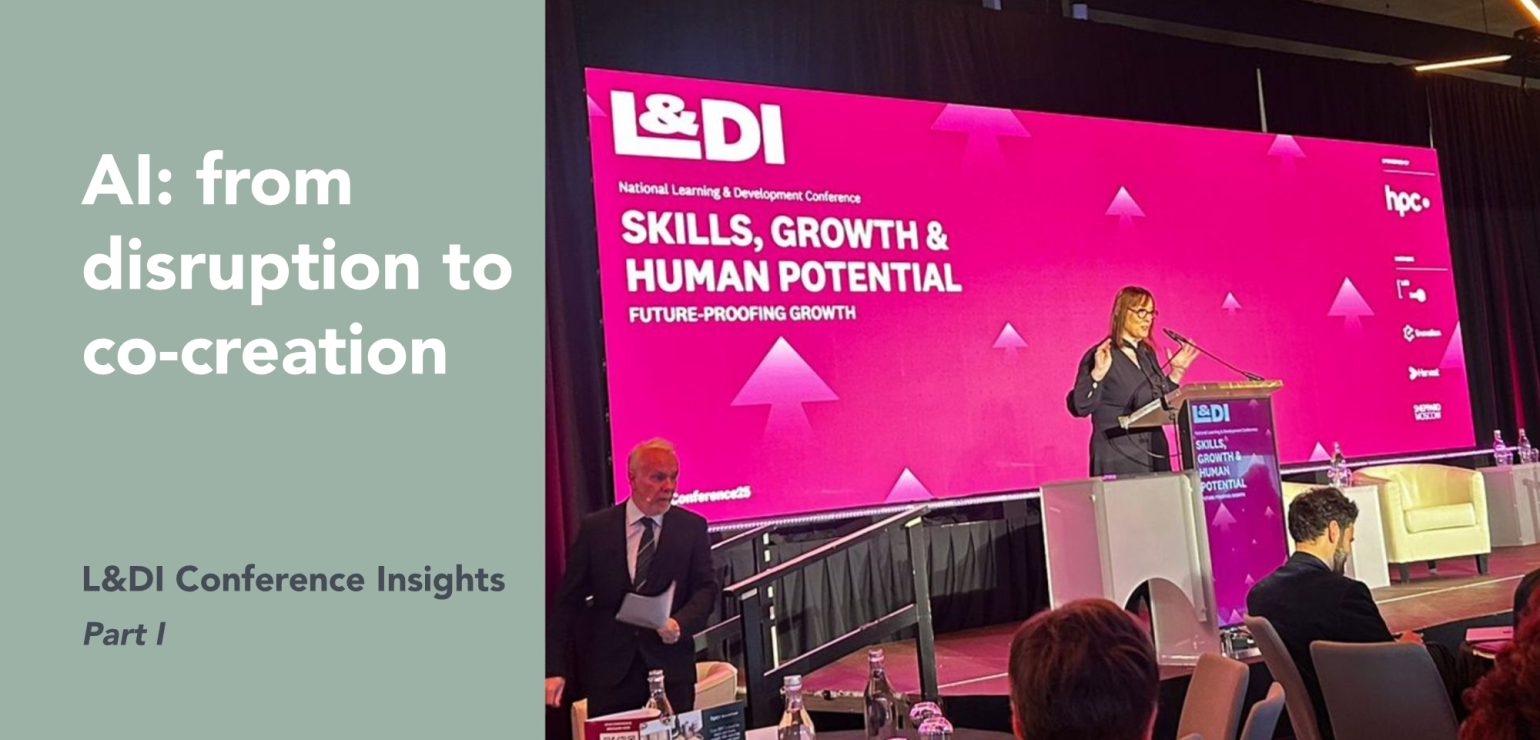Leadership and AI Part One

Does your culture set you up for the benefits of AI or just the risks?
AI is changing the workplace, and if you are a leader, it’s changing your role right now. If you thought there was a part of your reality where your focus could be on maintaining status quo and managing within known parameters, think again. It is all up for debate.
AI amplifies the complexity that we all face, and yet has the potential to speed up the cycle through which we reduce complexity if we pay attention to the human factors that influence which way the dice will fall. Here’s the thing: attention to culture and human relationships remain key to successfully leading through change, and that’s just as true when the change relates to adoption of AI.
As with any complex adaptive challenge, there is no playbook or manual. Leaders must create the conditions in which new paths forward can emerge, setting down the boundaries within which people can experiment and learn and then spotlighting and amplifying what works.
So, leaders must pay attention to the human system and create a CULTURE that enables resilience and innovation at scale through a powerful discourse around what we know, what we don’t know, and what AI really means for people (spoiler: it’s not going to replace most people’s roles, it’s going to change them).
A culture of curiosity, innovation and safety
To lead for innovation, leaders must foster a culture of experimentation and learning. In the context of AI, this means encouraging colleagues to play with the tools and develop their own AI processes to help their work.
Integral to a culture of experimentation is a culture of safe and ethical use. This means that colleagues experiment within appropriate parameters to avoid data leakage, and they are educated in how data sets work, the limitations of this technology, the biases embedded in AI and the technology’s inclination to hallucinate.
In both the experimentation and best practice – make sure there are systems to share learning! As colleagues get to grips with this new technology, don’t double up the innovative work, instead share the good news and reiterate.
Having the right conversations for healthy understanding
Fear of the unknown is rife in the AI discourse. In the workplace, this often translates to a fear of being replaced. Leaders must develop a narrative that addresses this fear, for example talk about delegating tasks to AI rather than replacing roles – talk about change and not extinction.
Be honest. Transparency around what is known and unknown demonstrates awareness of what’s going on, how it might affect the business, and also honesty around the things we simply can’t know yet. If leaders don’t address and publicly discuss people’s important and valid concerns, people will fill the gap themselves. With intentional and honest discourse, leaders can foster curiosity, not fear.
To lead a culture of innovation, to have the right conversations around AI and technology, there is a significant onus on leaders to be curious and engage firsthand. For leaders who do not consider themselves ‘tech savvy’, there is a temptation to leave decision making around this disruptive technology to the IT team. Take time to understand how the technology works relevant to the organisation in order to remain close to your strategy. As Ethan Mollick phrases it in his book 'Co-Intelligence' - be the human [leader!] in the loop!
We know AI is on leaders’ minds, we know it’s changing their business and placing new demands on their role. Next time, we’ll be moving from culture and discourse to teaming, discussing a practical approach to leading an AI-enabled team.
If you're interested in this topic, check out Aoife's blog on Riding the Waves of Constant Change where she discusses the disruptive new roles AI has already taken on in the industry.

 Andrea Cusack
Andrea Cusack 
 Aoife Keane
Aoife Keane 
